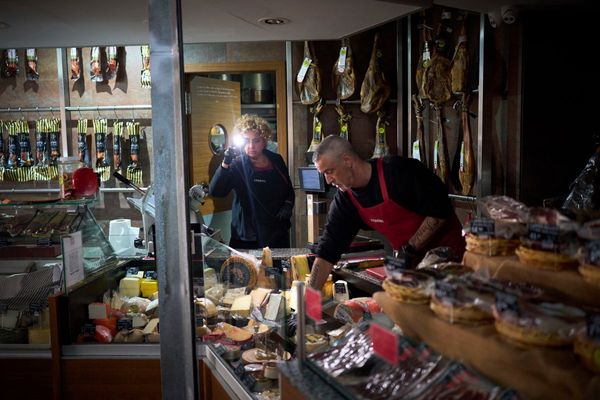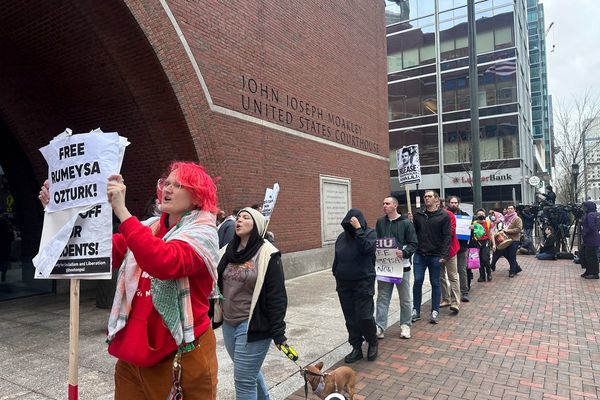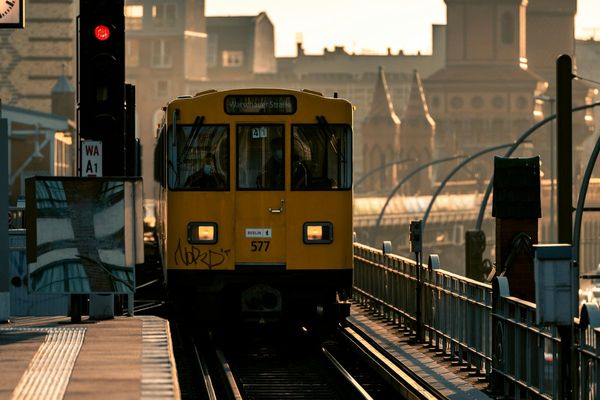Canberra's college system may struggle to cope with a surge in teenagers, new analysis suggests.
A five-year forecast of enrolments has identified 19 public schools, most in the ACT's north, where demand will approach or exceed the available teaching space.
Due to a quirk of Canberra's current demographic cycle, most of this pressure will fall on facilities for year 11 and 12 students.
However, the Education Directorate says it is examining ways to increase space in crowded schools, and is confident students won't be diverted outside their area.
The ACT government is also building four new schools in areas of high demand, which will open within the next few years.
The directorate engaged Australian National University (ANU) demographers to predict how public school enrolments would change over the next five years.
The ANU model suggests college enrolments will grow by 17 per cent.
That's much faster than high schools (11 per cent), and especially primary schools, where overall enrolments will barely grow at all (less than 2 per cent).
The directorate places crowded schools — those at 80 per cent of capacity or more — on a watch list.
When enrolments hit 85 per cent — schools marked in red on the map below — it works more urgently to ensure students have enough space.
Deb Efthymiades, the directorate's head of system policy and reform, says the ANU predictions are "proving to be quite precise" based on recent years.
Looking ahead, she says most growth will be in newer areas of Canberra, which can be more difficult to predict as less is known about them.
"There's a lot of that [growth] in Molonglo, and there's West Belconnen," Ms Efthymiades said.
"And, of course, we still have Gungahlin as a main growth area."
Teen wave to hit Gungahlin, Belconnen
Three of the ACT's nine public colleges — the Canberra College (in Woden), Narrabundah and Gungahlin — are already on the directorate's action list.
However, Lake Ginninderra, in Belconnen, is expected to join them as a wave of teenagers finish year 10.
The number of college students in Gungahlin is predicted to grow by 30.5 per cent within five years, and 19 per cent in Belconnen.
That will mean too many Gungahlin College students, given the available space.
Woden's growth will be more modest (6.5 per cent), but still enough to push the already-crowded Canberra College beyond its maximum capacity.
The school is also affected by the nearby Molonglo Valley community, which has no college.
This year's ACT budget set aside funds to plan for a second college in Gungahlin.
Ms Efthymiades says the directorate's preferred site for that school is in Nicholls.
She also says the government's latest land release program prioritises finding space for a new college in Molonglo.
"So that will certainly help with the Woden and Molonglo situation," she says.
Inner-suburban high schools stretched
The ANU model suggests no public school for years 7 to 10 students will exceed its limits.
Nonetheless, already-stretched facilities in the inner north, inner south and Belconnen are likely to become more crowded.
These crowded schools include Belconnen, Lyneham, Canberra, Alfred Deakin and Campbell high schools.
Meanwhile, two new high schools will open in Gungahlin — in Taylor and the new suburb of Kenny — in 2024.
(Telopea School, jointly run by French and ACT governments, was excluded from the ANU analysis because it has different enrolment policies.)
Primary school-aged population stagnant
Canberra grew rapidly in recent years, but it gained relatively few young children.
In fact, the ANU model predicts primary school enrolments will decline in Tuggeranong, Woden and Belconnen.
Enrolments in Molonglo, however, are expected to grow extremely quickly (up 63 per cent in five years). A new primary school is scheduled to open in Whitlam in 2025 to help the region cope.
The ANU forecasts suggest 10 primary schools will have limited space, with students taking up 85 per cent or more of the current capacity.
Margaret Hendry and Throsby schools, both in Gungahlin, are among the fastest-growing in Canberra. The former will gain a new building next year, adding significantly more space.
Another primary school will open in Strathnairn, west of Belconnen, in 2025.
What happens when schools get crowded?
When a school's enrolments surpass the 85 per cent "warning" level, the directorate swings into action.
That can mean building extra classrooms or simply using existing space better.
"We go through what can be done in order to make sure that the integrity of learning and that experience for the community is maintained," Ms Efthymiades says.
"Some schools stay on the watch list and don't change much.
"Others, we will look at … some temporary expansion if it's only going to be short-term anticipated growth, or we might look at some permanent expansion if it's going to be a longer-term growth."
One thing the directorate tries to avoid is changing enrolment zones.
Instead, Ms Efthymiades says it works with crowded schools to find other solutions in the area.
She gives the example of the inner north, where schools recently agreed that expanding Majura Primary was the best solution.
"If we had to put a new school in — which was a possibility — then we would have had to change priority enrolment areas, and that's something we seek to avoid doing," she says.
"Because we know that families are after assurance and stability. And when they make choices about where they live, that often includes considering what schools their kids will go to."
Concerns remain for Molonglo parents
Monique Brouwer, of Coombs, is a mother of two children in public schools, and also co-convenes the Molongo Valley Community Forum.
She is increasingly worried about the area's lack of a college.
"When I moved to the Molonglo Valley in 2017, I was promised a college — [but it] has been delayed and delayed and delayed," she says.
Her daughter Maddy is in year 7 at Mount Stromlo High.
For now, there is no public option for students in years 11 and 12 other than The Canberra College in Woden, which is presently too small to cope with predicted enrolments.
Ms Brouwer says that campus is a "fair distance" from Molonglo.
"I'm also concerned about how they can offer the best possible education, if it is overcrowded or if it is at capacity or above capacity, which I've been concerned with, looking at the growth in the Molonglo Valley."
The government is searching for a new college site, but Ms Brouwer says that is little comfort to parents in the area.
"We estimate that will take 10 to 15 years [before it's opened]," she says.
"I want the Education Directorate to come to the community, explain that there's going to be problems — and we'll look for solutions.
"How are they going to make Canberra College a great learning environment for my daughter when we already know that it's at capacity?
"There's only so many children or young adults who can fit into that space, so I really want to know what the plan is.
"What are the interim measures, while we don't have a college in the Molonglo Valley?"







